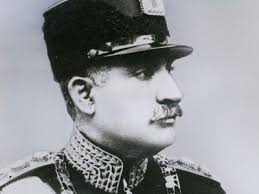Every day this month something happened that made think either, 'I should try to get a waiver and stay in the Army.' Or 'I would get out tomorrow if I could.'
What I will actually do is put on my uniform an hour before the sun comes up tomorrow and go to drill. When I get there, we will have formation, then I will have two, two-hour classes: one on resiliency and one on how to get along with people of other races, sexes, sexual orientations, etc.
Wednesday, when I found out about the classes, it was one of those I-can't-be-out-soon-enough days. The resiliency classes are pop psychology which may work for people under normal, everyday, I-live-in-America levels of stress which includes three meals a day, shelter, smart phone, computer, TV and a thousand other things the majority of the world would LOVE to have. But resiliency training is not going to work if you are face down on one side of the road with you lower leg still in the Humvee you were just blown out of. Suffering builds courage, builds inner strength, builds the resiliency the Army really wants us to have. But we get two hours of pop psychology instead.
Today, I wanted to stay in. I was talking to one of the funniest soldiers in my unit, a Blackhawk pilot named Latifa Gaisi who posted a link on Facebook about a female F-16 pilot flying for the United Arab Emirates Air Force hitting ISIS targets. Talking to Latifa made me want to stay in. The 1st Infantry Division set up its headquarters in Iraq. That's 500 pairs of boots on the ground that are set up to command 15,000. Are they there just to enjoy Iraq in the Fall? This time we are not trying to win hearts and minds. Every soldier I know who was part of the ridiculous mission in the last war, would like to return with a mission to win, me included.
Tonight, my sons came home from school, one after cross country practice and the other after getting help with English from one of the tutors on his squash team at F&M College. The boys are doing well--much better than last year. In part it is because they are in a better school, but it is also because I am home a lot more. I work just two days a week. When they have trouble I am around. I am not riding a train or off at a three-month Army school.
So it also seems to be time to let Latifa and the other 20-year-olds go off and smash ISIS. I even backed out of doing the 28-mile ruck march on October 11. I am getting shoulder surgery soon and carrying a 35-pound pack for 9 hours could switch my torn ligaments from scheduled surgery to emergency.
I will try to enjoy the next several months till I am out. But currently, the chameleon is stopped--far away from green.



















